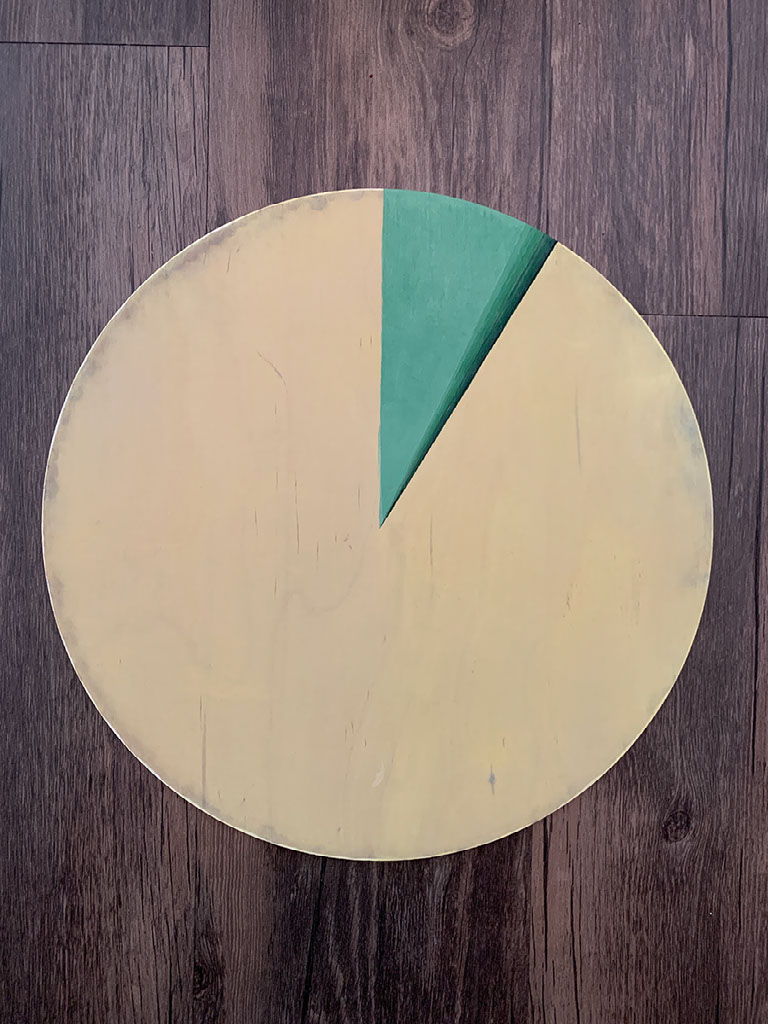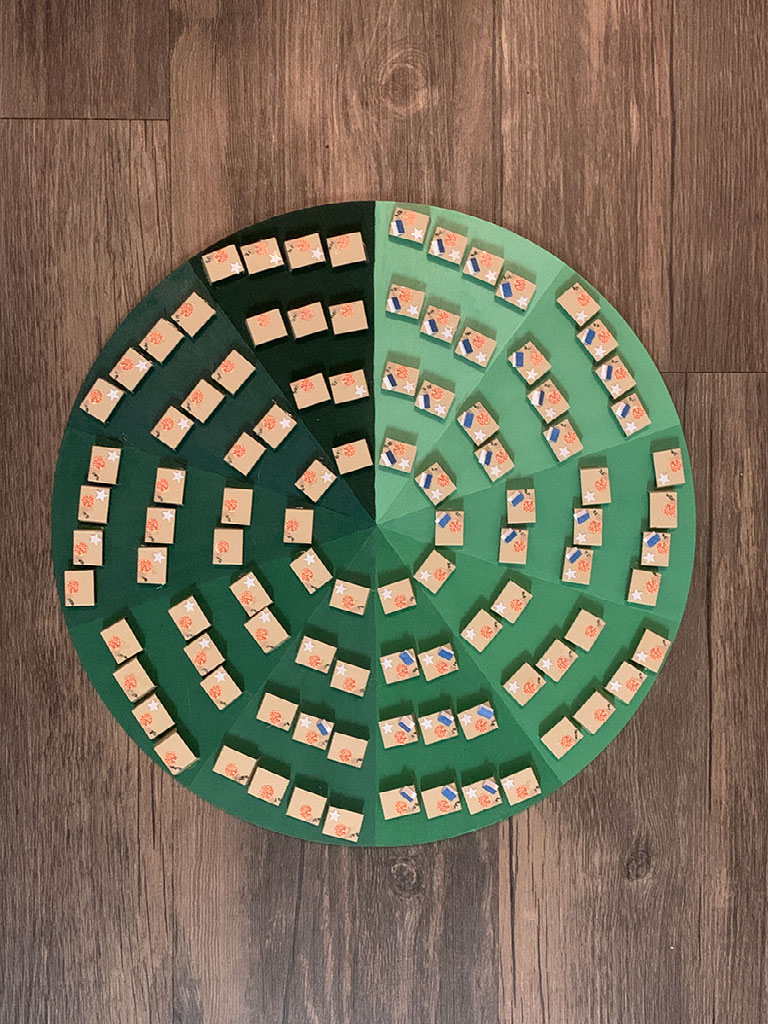Languages and Education The Correlation between north Carolina public school language programs and non-English languages spoken in homes
Overview
This project examines the top ten populous counties in the state of North Carolina, in conjunction with the top ten languages spoken in homes, aside from English. The data illuminates the diversity and perhaps unexpected realities of languages spoken in the state, and the correlation, or lack thereof, to languages offered in county public school systems.
An early design for this project drew heavy influence from the term komorebi, 木漏れ日, in Japanese. It is the phenomenon of sunlight filtering through the trees. Though I have changed the design, the color theme is still evident. With this concept, you can still see - you should still see - everything regardless of whether or where sunlight hits, but sometimes growth requires extra care and notice.
Data Gathering and Planning Process
Many data sets can be found or formed regarding languages spoken in homes. The data challenge that revealed itself for this project lay in finding data that clearly broke down language family trees, had contemporary validity, and also matched population data enough to justify association. More current data is always preferred, but proportions are easier to estimate growth than amount from the start. Nonetheless, numerous data sets and sources were consulted to confirm the general pattern of the data remained the same, even if exact numbers differed slightly. The Modern Language Association's data compilation from ACS datasets proved the best mix of accuracy and desired data fields.
The multiple levels of data creates great possibility for representation, but available resources, physical space constraints, and other factors resulted in the final conceptual model. Note that for this project, "top ten" reads as "top ten most populous" or "top ten most spoken other than English" depending on the context.
Understanding the Data Representation
This project and studied data centers around education at its core. Thus, the physical representation of the data is meant to reflect the theme through classroom staples and associations. These include: school desks, star stickers, notebooks, and the classroom pizza party. Additionally, looking at the detailed circle, having the biggest language/lightest green (Spanish) in the proper place, the colors proceed in a clockwise motion.
The primarily yellow circle represents the population of the state of North Carolina and the top ten non-English languages spoken in the home. The yellow is semi-translucent, to indicate data still exists there, but the focus is elsewhere. The yellow represents not just English, but every other language aside from the top ten. This project component helps put the populations in perspective when viewing the second circle.
The languages, in descending order of population, are as follows:
- Spanish
- French
- German
- Vietnamese
- Chinese
- Arabic
- Korean
- Tagalog
- Hindi
- Gujarathi
The 10-sectioned circle has colors corresponding to the scale in the first. Thus, the language of the lightest green (Spanish), is seen in state proportions, and then how each county relates to it. Each language slice has a descending order of ten desks representing the top ten most populous counties. Thus, each county has a desk in the same position in each language. There are three potential characteristics worthy of note on each desk: the star sticker, the pizza/percentage, and the notebook. The star means that language is in that county's top ten as well. The pizza indicates what percentage of that county speaks that language. Lastly, the notebook means the language is taught in the majority of that county's public schools, specifically at the high school level.
The counties, in descending order of population, are as follows:
- Wake
- Mecklenburg
- Guilford
- Forsyth
- Cumberland
- Durham
- Buncombe
- Union
- Cabarrus
- Gaston
What Is Not Visible
As the purpose of this project is to illuminate, I also want to be very clear on what is not shown - not because it was intended to be hidden, but because I am drawing more direct attention to a specific aspect(s) of the data while still acknowledging other factors of consideration.
The translucent yellow of the overview circle, once again, includes every language spoken in NC homes, aside from the top ten studied. Additionally, the full list of each county's top ten languages is not visible, only through how it relates to the state's top ten. Lastly, the full list of languages taught in each public school system are not evident. Outliers for these include, but are not limited to: Latin, Japanese, and ASL. To be clear, this project is by no means saying these languages should not be offered, as there are a wealth of reasons for their instruction, instead just to illustrate potential differences. Perception is a very sensitive concern with data presentation, in simple and complex understanding alike.
All of the above were studied in their specifics for this project, in addition to exact numbers for what is visible, but the greater clarity encourages more intake and deliberation.
From Why to How
Sometimes data matters simply because it is yet to be shown. Personally speaking, nearly every conversation, lecture, curriculum guide, etc. I remember from grade school regarding languages related to usefulness and/or college, nothing about what people actually spoke in our community. Some of these data may surprise some. Now, we may grant that in just proportions alone, Spanish is undoubtedly a likely encounter in the state, and county. This being said, Vietnamese is the fourth (fifth from English) in the state, and it is not offered in a single school system studied here. Presumption can be of too much or too little expectation.
This artefact, particularly when viewed from above and far away, is order. We assume there is rhyme and reason, and not to say there isn't, but we are unaware of the details without closer and more frequent examination. Part of the reason the pizza/percentage is so small is to illustrate a two-sided thought: You need to take the time to look close, let it come into focus, to see how to best serve your community; and, everyone should ideally get a pizza slice still. The details are always important, but they should never be an easy excuse. In some ways, perhaps "representation" is not the best term. The data refers to people, but it does not represent them, as they are so much more than a digital code of sorts.
Supplemental programs such as online courses, public library offerings, tutoring, etc. are always viable options that are not reflected in this data of course, but the question is somewhat of responsibility. Boards, legislation, state standards, standardized testing, college and university requests, local communities... all these and more come into the conversation. Multicultural events at schools and libraries, guest speakers, pamphlets, a featured snack or cafeteria food, etc. - these are just a small portion of potential ideas of acknowledgement and incorporation without having to create an entire curriculum and hire faculty, though it should still be discussed. Most importantly, it should be discussed, in some capacity, with students, staff and faculty, school supporters, and more. On a larger scale, asking colleges what languages they offer and why would present even more opportunity for analysis.
Resources are always a concern, everything from knowledgeable faculty to funds, so while not proposing hasty overhauls of change, awareness is key, but should always be followed up and through with continuous discussion and future proposals.
Languages matter so much to our world. In some areas of life, when the need gets bad enough, the resources will find a way; however, sometimes if the need is never considered as a possibility, the resources have to be more deliberately discussed.
References
- "Foreign Language." Winston-Salem/Forsyth County Schools, https://www.wsfcs.k12.nc.us/Page/107112.
- "Global Languages." Guilford County Schools, https://www.gcsnc.com/Page/10964.
- "High School Course Guide." Durham Public Schools, www.dpsnc.net/cms/lib/NC01911152/Centricity/Domain/139/201920_hs_course_guide.pdf.
- "High School Curriculum & Instruction." Cabarrus County Schools, https://www.cabarrus.k12.nc.us/Page/1094.
- "High School Education." Union County Public Schools, https://www.ucps.k12.nc.us/Page/6405.
- "High Schools." Buncombe County Schools, https://www.buncombeschools.org/o/bcs/page/high-schools-c-i.
- "MLA Language Map Data Center." Modern Language Association, https://apps.mla.org/map_data.
- "World Language." Cumberland County Schools, https://www.ccs.k12.nc.us/domain/1648.
- "World Languages." East Gaston High School, https://www.gaston.k12.nc.us/domain/5458.
- “World Languages.” Wake County Public School System, https://www.wcpss.net/domain/61.
- "World Languages and Language Immersion." CMS, https://cmschoice.org/your-choices/world-languages-and-language-immersion/.

